|
Parisoma subcaeruleum
(Chestnut-vented tit-babbler, Tit-babbler)
Bosveldtjeriktik [Afrikaans]; Kaapse meeszanger [Dutch];
Parisome grignette [French]; Meisensänger [German];
Felosa-chapim-dos-bosques [Portuguese]
Life
> Eukaryotes >
Opisthokonta
> Metazoa (animals) >
Bilateria >
Deuterostomia > Chordata >
Craniata > Vertebrata (vertebrates) > Gnathostomata (jawed
vertebrates) > Teleostomi (teleost fish) > Osteichthyes (bony fish) > Class:
Sarcopterygii (lobe-finned
fish) > Stegocephalia (terrestrial
vertebrates) > Tetrapoda
(four-legged vertebrates) > Reptiliomorpha > Amniota >
Reptilia (reptiles) >
Romeriida > Diapsida > Archosauromorpha > Archosauria >
Dinosauria
(dinosaurs) > Saurischia > Theropoda (bipedal predatory dinosaurs) >
Coelurosauria > Maniraptora > Aves
(birds) > Order: Passeriformes
> Family: Sylviidae > Genus: Parisoma
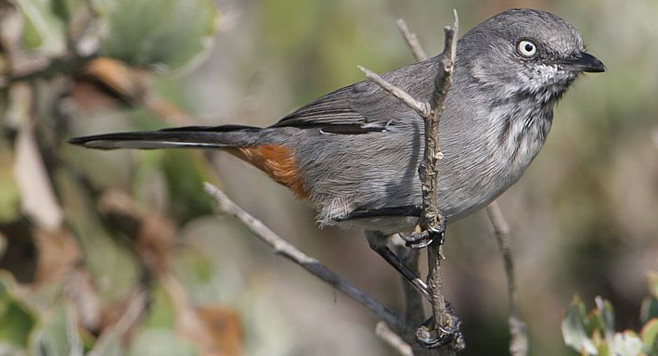 |
| Chestnut-vented tit-babbler, Koeberg
Nature Reserve, South Africa. [photo
Trevor Hardaker ©] |
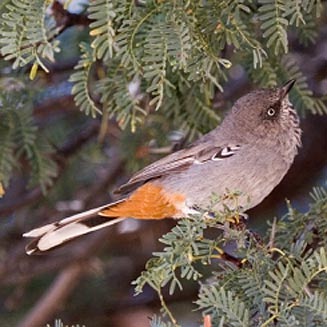 |
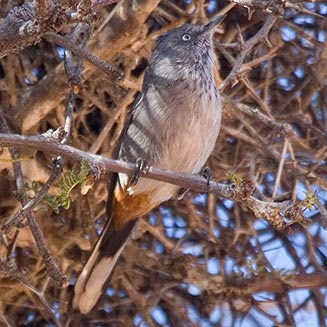 |
| Chestnut-vented tit-babbler. [photo
Neil Gray
©] |
Chestnut-vented tit-babbler. [photo
Neil Gray
©] |
Distribution and habitat
It occurs from Angola south to southern Africa, where it is
common across much of the region, excluding Mozambique and parts of Zimbabwe and
eastern South Africa. It generally prefers savanna woodland along drainage
lines, edges of thickets and bush-strewn hillsides and gardens within rural
villages.
|
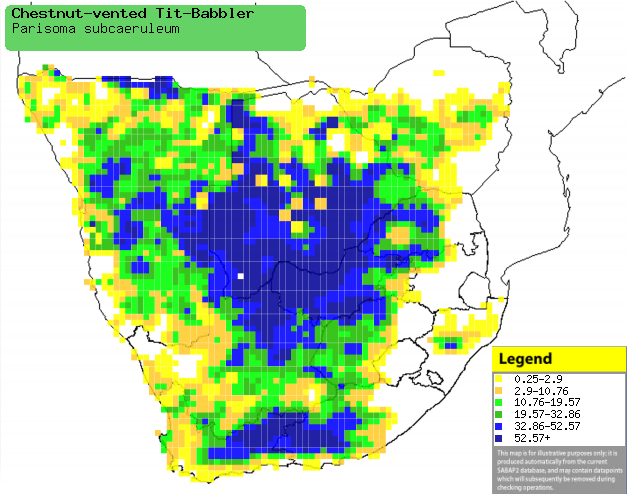 |
|
Distribution of Chestnut-vented tit-babbler in
southern Africa, based on statistical smoothing of the records from
first SA Bird Atlas Project (©
Animal Demography unit, University of
Cape Town; smoothing by Birgit Erni and Francesca Little). Colours range
from dark blue (most common) through to yellow (least common).
See here for the latest distribution
from the SABAP2. |
Brood parasites
It has been recorded as host of the
Diderick
cuckoo and
Jacobin cuckoo.
Food
It mainly eats insects gleaned from branches, supplemented
with fruit. It is an agile foraging, rapidly moving through foliage in search
prey and occasionally hawking termite alates. The following food items have been recorded
in its diet:
- Insects
- Fruit
- Scutia myrtina (Cat-thorn)
- Lycium (honey-thorns)
- Seeds
- Nectar
- Aloe marlothii (Mountain aloe)
- Aloe greatheadii (Spotted aloe)
Breeding
- The nest is a thin-walled cup built of dry grass, rootlets and strips of
silk bark, secured with spider web. It is typically placed in the branches
of a bush or small tree, occasionally in mistletoe.
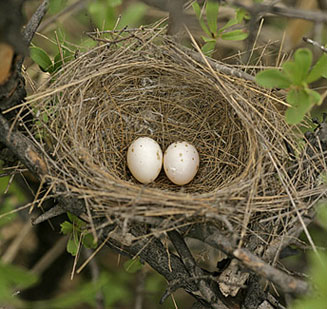 |
|
|
Chestnut-vented tit-babbler nest with eggs,
Sericea farm, South Africa. [photo Warwick Tarboton ©] |
|
- It lays 2-4 eggs, which are incubated by both sexes for about 13-16
days.
- The chicks are cared for by both parents, leaving the nest after about
14-15 days.W
Threats
Not threatened.
References
-
Hockey PAR, Dean WRJ and Ryan PG 2005. Roberts
- Birds of southern Africa, VIIth ed. The Trustees of the John Voelcker
Bird Book Fund, Cape Town.
|
